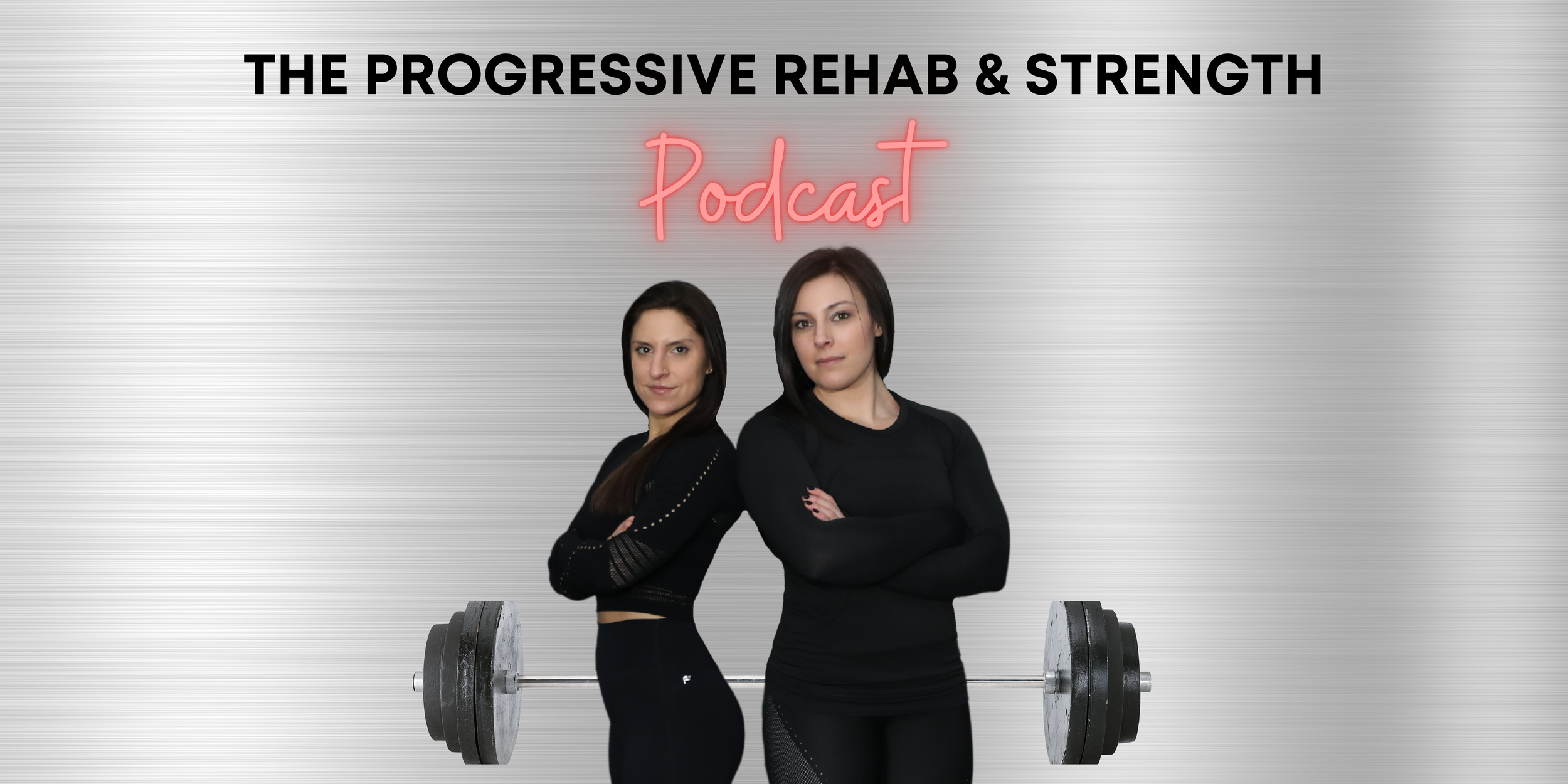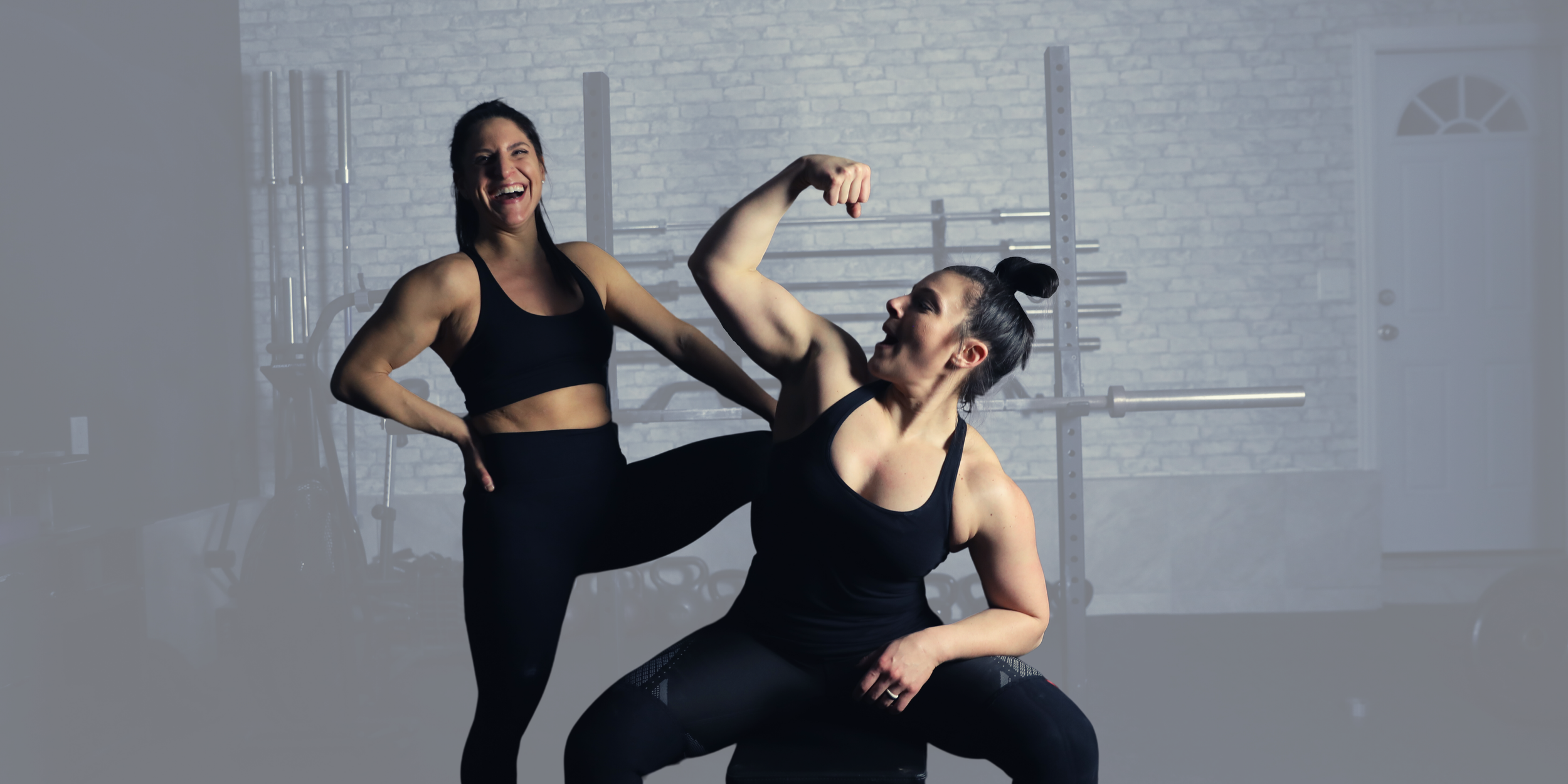
Welcome to the Progressive Rehab & Strength Podcast:
Uncover the art of strength training and rehabilitation.
_______________
Your one stop shop for everything barbell programming, powerlifting, injury risk reduction, and powerlifting rehabilitation to make your training sustainable.
SUBSCRIBE ON ITUNES | LISTEN ON SPOTIFY | EMAIL ME NEW EPISODES
We strive to help barbell strength and powerlifting athletes, coaches, and clinicians demystify strength training as we discuss the gray area and "it depends" answers to creating sustainability under the barbell and in business.
We're here to step in where Google searches, personal training certifications, and higher level education fail to deliver the answers you're looking for and the answers you need.
Join us as we discuss topics such as :
✓Powerlifting Programming Principles
✓ Barbell Lifting Techniques
✓Injury Risk Reduction Strategies
✓Optimizing Goal Attainment
✓Powerlifting Rehabilitation
✓Barbell Training Longevity
✓And much more
We'll share how our opinions, experience, and understanding evolve over time through discussions with PRS Clinical Coaches, expert interviews, audience Q&As, and insider tip episodes.
We’re your hosts:

Dr. Alyssa Haveson, PT, PRSCC, CSCS & Dr. Rori Alter, PT, PRSCC, SSC
Join us on our journey as we uncover the art of barbell strength training and rehabilitation.
Subscribe now to the Progressive Rehab & Strength Podcast.
SUBSCRIBE ON ITUNES | LISTEN ON SPOTIFY | EMAIL ME NEW EPISODES
Mentally drained after a powerlifting meet? Wondering when to shift to maintenance calories? Learn about burnout, recovery, and nutrition strategies in this PRS Podcast Q&A episode.
Discover how Anna Marie Oakes-Joudy stays consistent with barbell training while raising and homeschooling five children, running a business, and overcoming life's challenges. Tune in to this episode of the Progressive Rehab & Strength Podcast Inspirational Interview Series for motivation and practical strategies.
Discover time-efficient strength training strategies for new parents & busy professionals. Learn how to adjust training intensity, volume & recovery for progress.
New parent modifications to powerlifting and barbell training programs during the postpartum period. Learn how sleep deprivation, time constraints, and recovery challenges affect strength training, and discover practical tips to stay consistent and injury-free while adjusting your approach.
Competitive powerlifter Stephanie Tracy shares her journey from Powerlifting America’s Bench Press Nationals to winning the Pan American Championships. Learn how she overcame injuries, navigated tough decisions, and stayed mentally focused on competition despite setbacks.
Competitive powerlifter Stephanie Tracy shares her journey from Powerlifting America’s Bench Press Nationals to winning the Pan American Championships. Learn how she overcame injuries, navigated tough decisions, and stayed mentally focused on competition despite setbacks.
Injuries in powerlifting competitions are a tough reality. Explore how to manage injuries leading into a powerlifting meet, adjust attempt selections, and make smart decisions when you get hurt during a competition. Learn when to push through, when to step back, and how to safeguard your long-term lifting goals.
Discover advanced powerlifting game day strategies for coaches and competitive lifters. Learn how to optimize attempts, handle red lights, perfect deadlift technique, and master logistics at national and international meets. Expert tips for success at every level.
Dive into the essential strategies for planning and executing a successful powerlifting competition. Learn how to go 9-for-9, plan your attempts, and make the right calls for your openers, third attempts, and weight selections.
Learn how to choose the right powerlifting weight class, when to cut or bulk, and how weight changes affect your performance and PRs. Get expert tips to optimize your strategy for meet day success.
In this PRS Podcast episode, Dr. Rori Alter and Dr. Alyssa Haveson discuss how to prepare for your first meet, common questions from novice lifters, and what to expect on game day. Join them as they kick off a series on powerlifting competitions for the novice through elite powerlifter and coach.
The shoulder is one of the most commonly injured areas of the body in the sport of powerlifting. Modifications can be made so you can continue to powerlift while you rehabilitate your shoulder injury.
In order to protect yourself from shoulder pain or injury in powerlifting, it’s important to have good bar placement, grip width, and shoulder position. This optimizes force production while minimizing extraneous forces on the shoulder.
Chiropractic adjustments are often used for the treatment of neck pain and headaches. However, there is an increasing awareness that cervical spine manipulation may not be safe, therefore it’s important to know the risks, benefits, and alternatives when determining if cervical spine adjustments are best for you.
In a perfect world, you should pull all the slack out of the bar and body system in the deadlift set up. But if you’re making one of these three biggest deadlift set-up errors, here is how to fix them!
Neck tweaks and dizziness can sometimes occur with barbell training and powerlifting. So if you’ve ever wondered why you get dizzy when you lift heavy, why you tweaked your neck from the overhead press, where you should look when you squat, etc., you should understand that your eye gaze and neck position is very important when you lift heavy.
How you position your gaze and maintain your neck position when you lift is important. Your body’s balance responds to your neck and eye position so when you are barbell training, it’s important to keep your neck still and your eyes fixed to one point.
How you position your gaze and maintain your neck position when you lift is important. Your body’s balance responds to your neck and eye position so when you are barbell training, it’s important to keep your neck still and your eyes fixed to one point.
How you position your gaze and maintain your neck position when you lift is important. Your body’s balance responds to your neck and eye position so when you are barbell training, it’s important to keep your neck still and your eyes fixed to one point.
How you position your gaze and maintain your neck position when you lift is important. Your body’s balance responds to your neck and eye position so when you are barbell training, it’s important to keep your neck still and your eyes fixed to one point.
After a major accident that cost him his leg, Bruce Trout realized strength training saved his life and continues to inspire people to barbell strength train despite the odds, as if their life depends on it.
Is your ankle mobility affecting your squat depth and should you address it before getting under the barbell? The internet has been raging about ankle mobility being a major cause of squat depth issues for the last few years. But we’ll argue that your ankle mobility isn’t affecting your squat.
What lifting shoe is right for me? Here are 5 things you need to consider when choosing the weightlifting shoe that is right for you!
Tearing your Achilles tendon is a major injury that may require surgery. While some people can recover from an Achilles rupture without surgery, some will require surgery in order to return to highly ballistic and plyometric sports like gymnastics and olympic weightlifting.
Foot and ankle injuries directly caused by powerlifting are extremely rare. However, in most cases, barbell training can and should be uninterrupted due to a foot or ankle injury.
Do you need to have surgery for a torn Achilles tendon? Surgery is not the only answer and it’s possible to return to powerlifting and hit PRs if you work hard and barbell train during the rehabilitation process.
Can powerlift with pelvic floor or core dysfunction? YES! Here are our best pieces of advice for managing incontinence, prolapse, hernias, and diastasis recti in barbell training and powerlifting.
Should you fix your ankle mobility to squat better? Do you need orthotics when lifting weights? Why are weightlifting shoes important for powerlifting? Understanding how the foot and ankle function in barbell training helps answer these questions.
Can powerlift with pelvic floor or core dysfunction? YES! Here are our best pieces of advice for managing incontinence, prolapse, hernias, and diastasis recti in barbell training and powerlifting.

Discover how barbell strength training empowered a 75-year-old woman to recover from multiple fractures without inpatient rehab. Learn how aging athletes, physical therapists, and orthopedic surgeons can safely and effectively integrate barbell training into rehabilitation and long-term health strategies.